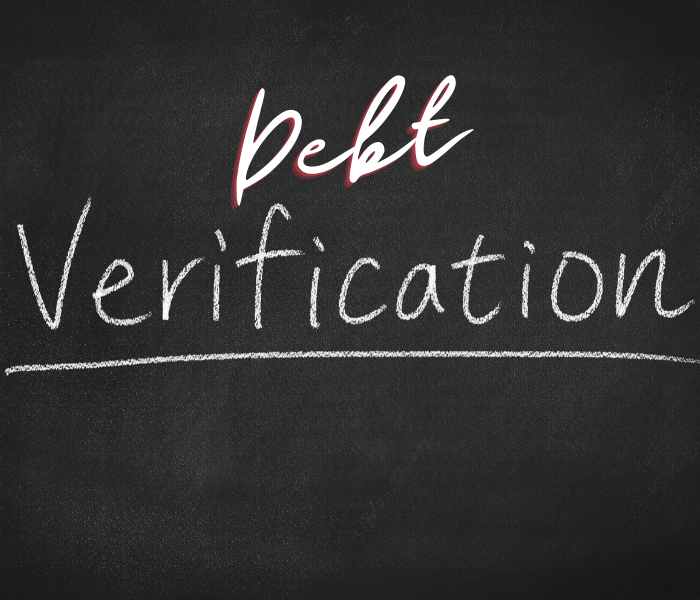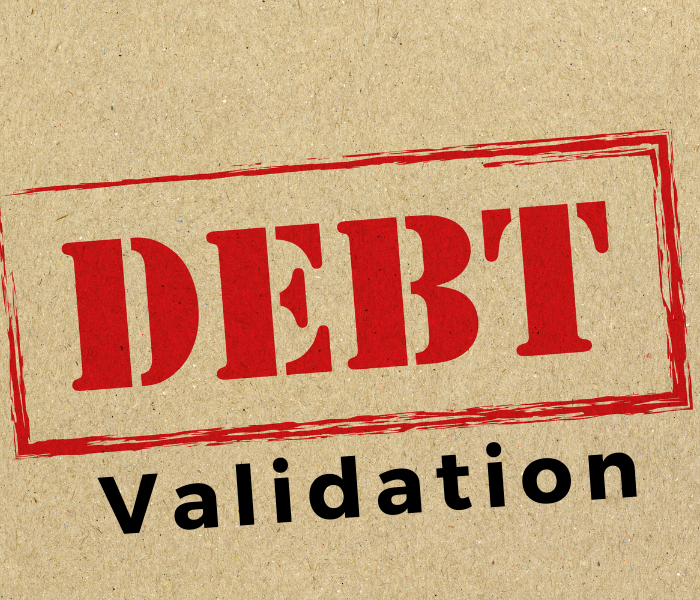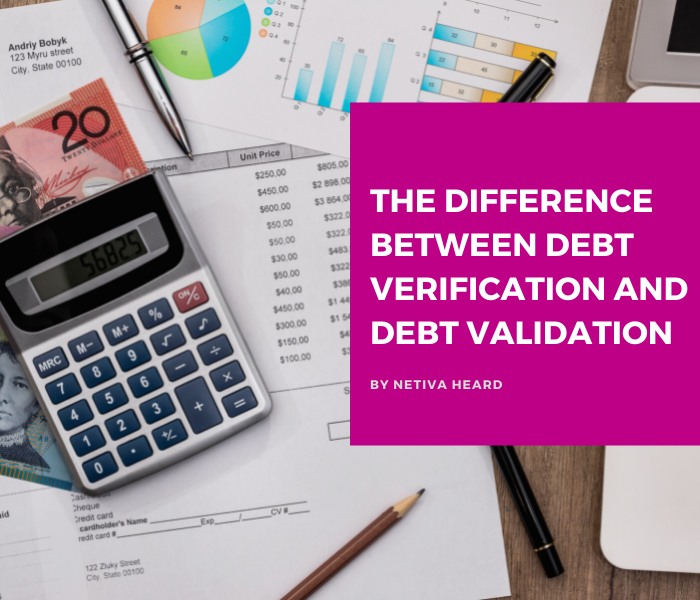The collection agency called. What you do next could have a significant impact on your finances and your credit score.
If you’ve ever been the target of collections calls and letters, chances are you’ve heard the terms debt verification and debt validation somewhere in the mix. The two sound similar and are often used interchangeably. But they’re not the same, and knowing the difference can potentially save you some hassle if your name ends up in collections.
Here’s a quick rundown on debt verification and debt validation and why the difference matters to your credit score.
What is Debt Verification?

When you receive a notice from a collection’s agency, the notice will state how much you owe. If you’re not sure if it’s the correct amount, you can request a debt verification.
Debt verification is the process where the collections agency verifies and confirms in writing the amount owed. They do not, however, have to provide supporting documentation that states how they came up with this amount.
The goal of debt verification is to ensure the collections process is targeting the right person or that collections are being requested for debts that have already been paid.
Verification letters are sent upon request of the debtor. You can write a letter requesting that your debt be verified. Ask for their response to include the following:
- Why the collections agency thinks you owe that debt
- The age of the debt (this is important to see if the debt is beyond the statute of limitations)
- The amount of the debt
- The agency’s authority to collect the debt (they should be licensed to collect debt in your state)
If you intend to pay the debt, you can request a letter to verify you are paying the right debt collector for the right debt. Or, if you are dealing with an aggressive collections agency, requesting a letter can pause the process. If the collector doesn’t have enough information, it may even deter their efforts altogether.
What is Debt Validation?

Debt validation is a little more involved than debt verification. When you request debt validation, you’re putting the onus on the collector to prove that the debt is your responsibility and that the requested balance is what you actually owe. What’s more, the debt collection agency must be able to prove they have been assigned to collect the debt.
There are a lot of moving parts to this. As a benefit to the consumer, the debt collections agency cannot move forward to collect the debt until it has been validated. If they fail to validate the debt, you can send a Cease and Desist letter to get them off your back.
Under the Fair Debt Collections Practices Act, collection agencies are required to send written consumers validation letters within five days of their first contact. Letters must include:
- The amount owed
- The name of the creditor seeking repayment
- Three statements:
- The debt is assumed valid unless you dispute it within 30 days of first contact;
- If you write to dispute the debt or request more details within 30 days, the collections agency will verify the debt by mail; and
- If you request information about the creditor within 30 days of first contact, the collector must provide it.
Many consumers who receive a debt validation letter also request a debt verification letter to ensure the debt collection request is valid. If you submit a letter requesting debt verification, it’s a good idea to send it via certified mail so you can ensure it’s received, plus you’ll have documentation of your correspondence with the debt collector.
Why Validate or Verify Your Debts?
Many people who are contacted by a debt collections agency have this knee-jerk reaction to pay the assumed amount owed. They panic because collectors are calling and they simply want the calls to stop.
But what you might not realize is that you aren’t always liable to pay that debt.
If you aren’t responsible for the debt, it’s better to keep your hard-earned money in your own pocket. That’s why debt validation and verification come in handy.
Debt validation tells you whether the collections agency has the authority to legally collect the debt. Junk debt buyers want quick resolution and rarely have proper assignment from the original creditor to collect the debt. Rather, they purchase bad debts for pennies on the dollar from the creditor.
Also, if the debt is past the statute of limitations, the amount is wrong, or you actually don’t owe the debt, you won’t have to pay it. In some cases, where the collections agency may have a weak case against you, initiating the debt validation process might scare them off.
After you validate the debt, you can request the agency to verify the debt. This buys you extra time because the agency must stop trying to collect the debt until it verifies this debt is yours and you’re required to repay it. You should start this process within the first 30 days of contact. You can still request debt verification after 30 days, but the debt will be assumed valid and the calls and collection attempts might not stop while the collector works to verify the debt.
Bottom line: Errors in the collections process happen, and these shouldn’t be at your expense. When you receive a collections notice, don’t be so quick to pay up until you receive more information.
At the very least, debt validation and debt verification can help you get time on your side. But never ignore any collections notices. Taking quick action to start the process will help your case and potentially save you a lot of money and stress.
For more ways to save your credit, explore our Free Credit Resources.









